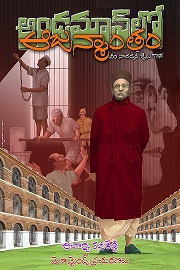The Meaning and Significance Behind Shikha: Why do we see some priests and monks have a shaved head with a tuft of hair in the ...
The Meaning and Significance Behind Shikha:
Why do we see some priests and monks have a shaved head with a tuft of hair in the back? First of all, this tuft of hair is called a shikha. When long enough, it tied in a knot at the crown-point (right above the suture) on the central top of the head. This point is given distinctive importance in the science of yoga and spirituality as the point of contact with the brain-centre of intellectual and emotional sensitivity. It also indicates the body as a temple.
The Shikha symbolizes the presence of discerning intellect,
farsightedness, and the deity of knowledge upon our head. It is a flag
of human culture. It reminds us of the religious principles of morality,
righteousness, responsibility, and dutiful awareness.
A Brahmin is one who after all his interim intellectual pursuits, is in
ultimate search of this final union or state of perfection. At this
point he is said to be one with the Brahman. This is the brahmin’s final
goal.
The shika covers that part of the skull wherein lies the final chakra – the Shasrara Chakra. He retains the hair to protect it. Then the question would arise, why shave of the rest of his head?
One of the main rituals of the brahmin’s practice is the Surya Vandana, and Sandya Vandana. It is believed that the sun is the primary source of clean energy not just to the physique, but also to the mind. He wants the uninterrupted rays of the sun to fall on his brain and soak in. (Remember, hair, like our nails, is dead matter.) He stands in the sun three times a day to pray, chant his mantras and meditate – facing the sun.
The shika covers that part of the skull wherein lies the final chakra – the Shasrara Chakra. He retains the hair to protect it. Then the question would arise, why shave of the rest of his head?
One of the main rituals of the brahmin’s practice is the Surya Vandana, and Sandya Vandana. It is believed that the sun is the primary source of clean energy not just to the physique, but also to the mind. He wants the uninterrupted rays of the sun to fall on his brain and soak in. (Remember, hair, like our nails, is dead matter.) He stands in the sun three times a day to pray, chant his mantras and meditate – facing the sun.
Significance of its position on the head:
Sushrut rishi, the foremost surgeon of Ayurveda, describes the master sensitive spot on the head as Adhipati Marma, where there is a nexus of all nerves, and a joint (Sushrut Samhitã 6/71). The shikhã protects this spot. Below this spot, in the brain, occurs the Brahmarandhra, where the sushumnã (nerve) arrives from the lower part of the body. In Yog, Brahmarandhra is the highest, seventh chakra, with the thousand-petalled lotus. It is the centre of wisdom. The knotted shikhã helps boost this centre and conserve its subtle energy known as ojas.
Sushrut rishi, the foremost surgeon of Ayurveda, describes the master sensitive spot on the head as Adhipati Marma, where there is a nexus of all nerves, and a joint (Sushrut Samhitã 6/71). The shikhã protects this spot. Below this spot, in the brain, occurs the Brahmarandhra, where the sushumnã (nerve) arrives from the lower part of the body. In Yog, Brahmarandhra is the highest, seventh chakra, with the thousand-petalled lotus. It is the centre of wisdom. The knotted shikhã helps boost this centre and conserve its subtle energy known as ojas.
Scientific Reasons for Having a Shikha:
Any religious or auspicious ceremony required the shikha to be tied in a knot. The knot was tied to the accompaniment of the Gayatri Mantra. An untied shikha was a symbol of disgrace, impurity and mourning.
- A person who keeps Shikha attracts cosmic energy which imparts enlightenment.
- The small portion of hair that hangs from behind our head applies little pressure on our brains that helps one to improve concentration and mind control and improve memory.
Any religious or auspicious ceremony required the shikha to be tied in a knot. The knot was tied to the accompaniment of the Gayatri Mantra. An untied shikha was a symbol of disgrace, impurity and mourning.











No comments